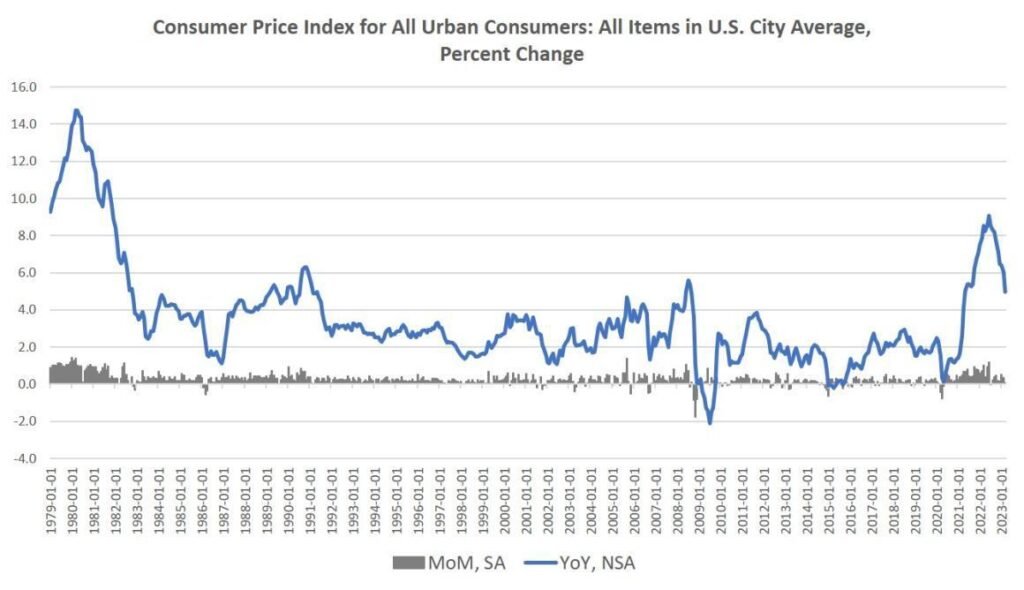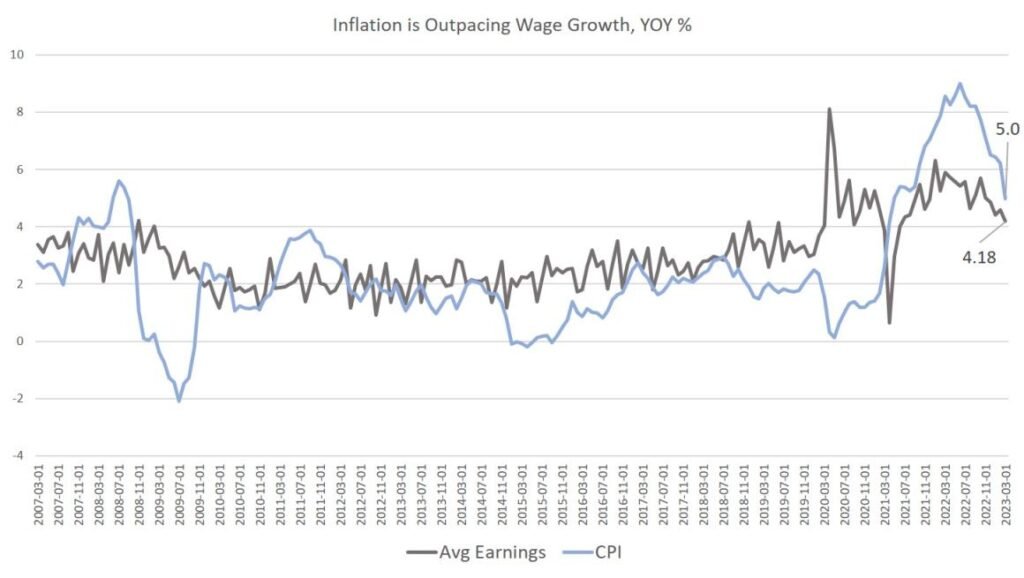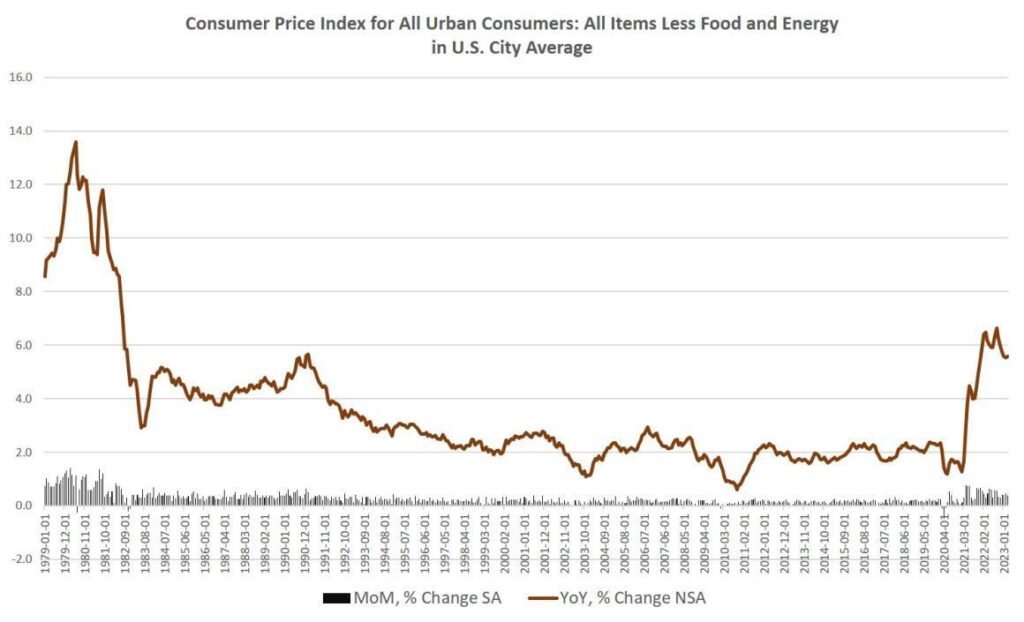The Bureau of Labor Statistics (BLS) released new inflation data showing that the Consumer Price Index (CPI) inflation rose 5.0% year over year in March, but real wages have declined during the past 24 months.
This is the lowest year-over-year increase in 23 months, but inflation has been at or above 5% for 23 months in a row.
Month-over-month inflation rose 0.1% from February to March, which is a decrease from February’s of 0.4%. The year-over-year growth rate in March is down from June’s high of 9.1%, which was the highest inflation rate since 1981.

CPI inflation growth has slowed due to decreases in energy, gasoline, and used car and truck prices, although food prices continue to rise.
Prices in energy overall fell 6.4% year over year, but shelter prices increased by 8.2% year over year in March — the highest growth rate since June 1982, and the month-over-month growth in shelter costs was also among the highest seen since the 1980s.
Real wages have been declining for 24 months in a row, with average hourly earnings increasing 4.18% year over year in March, but with price inflation at 5%, real wages fell.

The Biden administration is trying to spin the slowdown in price growth as a fall in inflation, citing falling gas prices and grocery prices in March.
However, even with lower energy prices, increases in food and shelter prices are enough to keep the cost of living going up in real terms. Mainstream media also admits that the cost of food and shelter remains high, while wage growth is slowing.

Core inflation, which excludes food and energy, fell slightly to 5.6% in March, but this is not down much from the 40-year high of 6.6% reached last September, and there is no sign of core inflation growth turning negative.
This means ordinary people who are trying to keep up with their grocery and rent bills, shouldn’t expect financial ease anytime soon. In contrast, Bitcoin is gaining in purchasing power with a median return of over 95% year-to-year.










